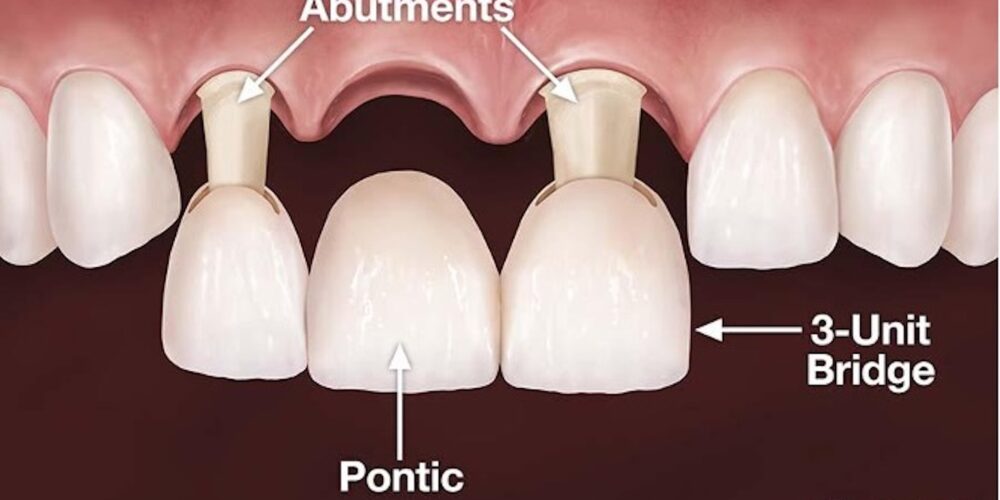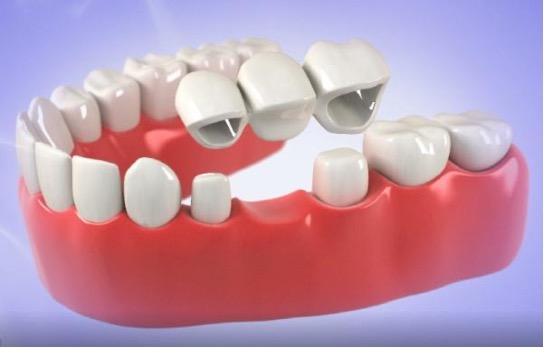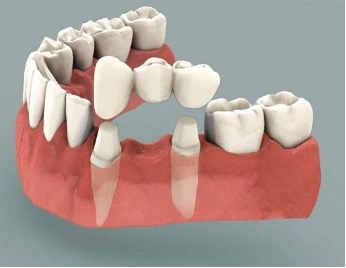
A dental bridge is a fixed dental restoration that replaces missing tooth/teeth with a false tooth/teeth. The false tooth, called a pontic, is bonded to the teeth on either side of the gap. In the past, bridges were used more commonly. However, now fixed dental bridges are only used if a dental implant is not an option.

A bridge is a restorative treatment to replace one or more missing teeth. It “bridges” the gap between existing teeth by using a false tooth (or teeth) held in place by dental crowns on either side. These crowns are typically placed over the adjacent healthy teeth, anchoring the bridge securely.
A dental bridge not only improves the appearance of your smile but also restores functionality, allowing you to chew and speak normally. It helps maintain the alignment of your remaining teeth and prevents the surrounding teeth from shifting into the gap left by the missing tooth.
There are several types of dental bridges, and the choice depends on your specific situation and oral health.
How does the dental bridge procedure work?
Consult:
The first step in the dental bridge procedure is a consultation with one of our general dentists. These issues are normally picked up in your routine checkups or in emergency appointments.
In the assessment, the clinician would take an evaluation of the tooth and decide whether a bridge is suitable over an implant. The treatment and dental bridge procedure would be explained, a treatment plan would be given, including any costs included, and all your questions would be answered.

Procedure:
The first step is to prepare the teeth on either side of the gap (called abutment teeth). Your dentist will reshape these teeth by removing a portion of their enamel to make room for dental crowns, which will fit over them. These are designed to look and feel like natural teeth. These abutment teeth need to be strong enough to support the bridge. Once the abutment teeth are prepared, the dentist will take impressions of your teeth to create a custom bridge. This will include the false tooth (or teeth) that fills the gap, as well as the crowns that will be placed on the abutment teeth. A temporary bridge is often placed while the permanent one is being made in the lab. At this stage, your practitioner will also determine the right shade for your bridge, so that it matches your natural teeth.
The permanent bridge takes around 2 weeks to come back from the lab.
Once the bridge is ready, your clinician will fit it. You will be given a local anaesthetic injection before the dental bridge procedure begins, which will block any pain from your gums.
In some cases, if the adjacent teeth are not strong enough to support a traditional bridge, dental implants can be used as anchors instead. Implant-supported bridges are secured by implants that are placed into the jawbone, offering a more durable solution for patients with significant tooth loss.
How to clean a dental bridge?
If the fixed dental bridge is joined to both teeth on either side, you will not be able to floss between them in the normal way. The best thing in this situation is to clean underneath the bridge by using either Tepe brushes or Superfloss.
If the bridge is secured on one end only (Cantilever bridge), then you will be able to use floss and follow it underneath the bridge to clean all areas.
In either case, we would recommend seeing a hygienist frequently to maintain your bridges and ensure longevity.
If you would like to find out more about dental bridges or book a consultation, please get in touch!
